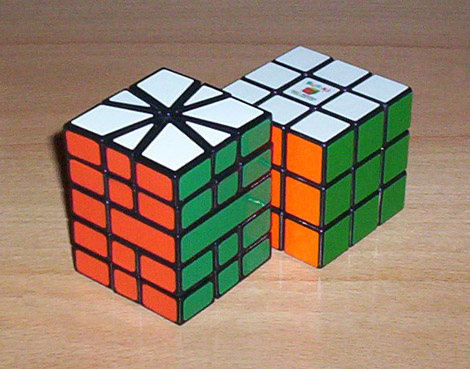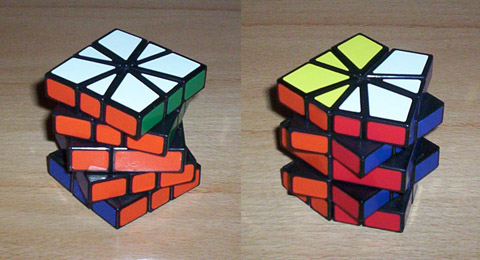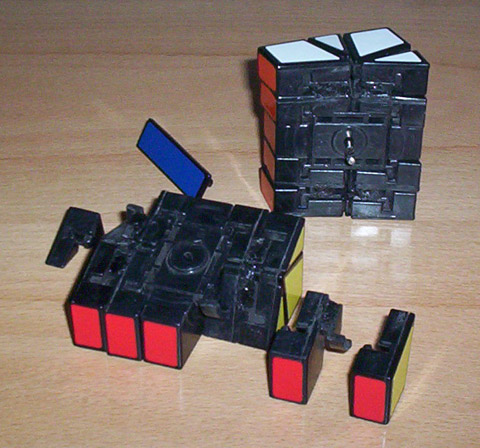

The five layer Square-1 is a transformation made from two standard Square-1 puzzles. There is no real source for the Square-1 as the puzzle has been mostly discontinued. There is a link to purchase the puzzle at rubiks.com but it may or may not offer them for purchase in the near future.
The five layer Square-1 draws its inspiration from the work of Anthony Greenhill. A picture of his puzzle can be found here at the Twisty Puzzles museum. The 5 layer Square-1 shown here takes Mr. Greenhill's work and goes one step further. Functionally the two puzzles are identical in every way. Layer thickness is a personal decision up to a point. The only difference is whether one wants to spend extra Time making the outer layers equal the inner ones. Length and width of the puzzle are both roughtly 53 mm. The height of the 5 layer Square-1 can vary depending on the thickness chosen. The one pictured here is approximately 66 mm in height.
I have very little intention of building this puzzle for others to purchase. Therefore I have some information below regarding my build experience.
The 2 and 4 layers have to be a maximum of about 13 mm in thickness in order to keep the small pieces on layers 1 and 5 from falling out. There is little flexibility in the case of these two layers for mechanical reasons. Exceeding this maximum by even half a millimeter can have a very negative impact on puzzle stability. Preferrably you will go thinner.
Minimum thickness is also worth considering. Reducing thickness of pieces is most easily accomplished by removing the caps and then cutting down the desired amount. However If you cut down too far, say, below 12.5 mm total height (including the thickness of the cap) then the integrity of the piece rapidly diminishes as the wall of the piece around the ring groove becomes too thin to support the piece.
Unless the prospective puzzle builder wishes to custom build the layer thickness (for example, cutting the pieces from below rather than from above) then the 2 and 4 layers are almost inflexibly in the 12-13 mm range. Conversely, you may wish to do away completely with the plastic walls above the ring groove, but if you do each piece that fits onto that ring will be made up of three individual parts rather than just two. You can even reduce the height of the ring groove to get closer to the ideal 53x53x53 mm cube shape. Cut down the piece until there's no wall over the groove and then reduce the height of the groove tongue by about 1.5 mm. Use the cap as the anchor point for the now two separate pieces and you'll have yourself a near perfect cube.
However this is what I consider the point of diminishing returns. The amount of work put into the custom build increases dramatically. For those perfectionists who want perfect cube dimensions, this is the road that must be traveled. Perhaps I will some day as well but not yet. I don't even have two spare Square-1's.


